|
TAKEN FROM Angelo Bissessarsingh's 2012 Archive
Monos Island is now best known as a holiday resort, but for the latter part of the 18th century, well into the 1920s it was an actual community with public officers, a chapel, and families who resided there all year round. The bays of the island were each occupied by a family, foremost among them being the Tardieus who were the great whalers and fishermen of Trinidad in a bygone era. Brave, hardy and hospitable, the Tardieus were well known as boat-builders as well as fishermen and were synonymous with Monos for nearly two centuries. Outsiders were few in the isolated island paradise . In 1849 one of the Tardieu girls married a ruddy Scotsman named William Morrison. He settled in La Vallette (later called Grand Fond) Bay and held the post of Government Bailiff (sort of like a Ward Officer charged with collection of rates and taxes) at the puling salary of one pound eighteenpence per month. As such, he farmed and fished to support his wife and family, and who lived like the Swiss Family Robinson in their solitude. The great English author, Charles Kingsley visited Trinidad and Monos too in 1870. He was enchanted by the lifestyle of Morrison and his brood and soliloquized thus: “We beached the boat close to the almond-tree, and were welcomed on shore by the lord of the cove, a gallant redbearded Scotsman, with a head and a heart; a handsome Creole wife, and lovely brownish children, with no more clothes on than they could help. An old sailor, and much wandering Ulysses, he is now coast-guardman, water-bailiff, policeman, practical warden, and indeed practical viceroy of the island, and an easy life of it he must have. The sea gives him fish enough for his family, and for a brawny brown servant. His coco-nut palms yield him a little revenue ; he has poultry, kids, and goats' milk more than he needs ; his patch of provision-ground in the place gives him corn and roots, sweet potatoes, yam, tania, cassava, and fruit too, all the year round. He needs nothing, owes nothing, fears nothing. News and politics are to him like the distant murmur of the surf at the back of the island ; a noise which is nought to him. His Bible, his almanac, and three or four old books on a shelf, are his whole library. He has all that man needs, more than man deserves, and is far too wise to wish to better himself I sat down on the beach beneath the amber shade of the palms ; and watched my friends rushing into the clear sea, and disporting themselves there like so many otters, while the policeman's little boy launched a log canoe, not much longer than himself, and paddled out into the midst of them, and then jumped upright in it, a little naked brown Cupid whereon he and his canoe were of course upset, and pushed under water, and scrambled over, and the whole cove rang with shouts and splashing, enough to scare away the boldest shark, had one been on watch off the point. I looked at the natural beauty and repose ; at the human vigor and happiness : and I said to myself, and said it often afterwards in the West Indies : Why do not other people copy this Scot ? Why should not many a young couple, who have education, refinement, resources in themselves, but are, happily or unhappily for them, unable to keep a brougham and go to London balls, retreat to some such paradise as this (and there are hundreds like it to be found in the West Indies), leaving behind them false civilization, and vain desires, and useless show ; and there live in simplicity and content " The Gentle Life" ? It is not true that the climate is too enervating. It is not true that nature is here too strong for man. I have seen enough in Trinidad, I saw enough even in' little Monos, to be able to deny that ; and to say, that in the West Indies, as elsewhere, a young man can be pure, able, high-minded, industrious, athletic : and I see no reason why a woman should not be likewise all that she need be. A cultivated man and wife, with a few hundreds a year—just enough, in fact, to enable them to keep a Coolie servant or two, might be really wealthy in all which constitutes true wealth and might be useful also in their place ; for each such couple would be a little centre of civilization for the Negro, the Coolie and it may be for certain young adventurers who, coming out merely to make money and return as soon as possible, are but too apt to lose, under the double temptations of gain andof drink, what elements of the " Gentle Life " they have gained from their mothers at home.” The rapture which Kingsley felt over the Morrison clan at Monos must have been real indeed for seventeen years later, the Scotsman was still on the island albeit a bit frailer and was described as follows : “Monos has good water, several roomy houses, and capital bays for bathing, but the cultivation is not so good as it might be, since it is infested with parasol ants. One of Kingsley's 'At Last' heroes, Mr. Morrison, is still to the fore, though a little more weather-beaten than in the days when Kingsley dubbed him the ' much-wandering Ulysses.' Morrison died in 1904 and was buried in the sandy soils of his beloved La Vallette Bay His wife, Charlotte Tardieu, also seems to have been all that a pioneer woman needed to be. Indeed, many years after her death, Capt. Percy Fraser, a former Superintendent of Prisons who had visited the place as a youth in the 1880s and 1890s, wrote in the 1940s: “How many can remember Monos at the time I am writing about? Who remembers old William Morrison and his wife Tante Charlotte” as we youngsters called her and his large family of sons and daughters who were all born on Monos?. Old Morrison was a Scot and a typical one at that. He was a seaman who called here in his youth and married in the Dehere or Tardieu family who at the time owned Bays at Monos and Scotland Bay. At the time I am referring to , the Morrisons lived at Grand Fond Bay , subsequently owned by the Lack family and now by Mr. Albert Siegert (grandson of Dr. J.G.B Siegert of Angostura Bitters fame) . It was taken over by the Americans lately (during WWII) for military purposes. They (Morrisons) kept cows , goats and pigs and cultivated coconuts . People occupying the neighbouring bays got their milk from them. They baked their own bread which they also supplied to the Bays. Tante Charlotte was also the local doctor and whenever anyone fell sick in any of the Bays she was sent for. She readily answered the call and prescribed her well known and efficacious local remedies . Her cheerful disposition was quite sufficient to make a sick person feel better. At Grand Fond they had mango trees of all kinds and we boys enjoyed nothing better than to row over there during the mango season and enjoy that luscious fruit to our hearts content. Whenever we arrived, old Morrison would send one of his men to pick coconuts for us. After drinking as many as we could consume, we would load our boat with nuts to take away. We also enjoyed a glass of fresh milk, either cow or goat. Old Morrison held several posts at Monos under the Government . Postmaster, Harbour Master, Bailiff , Road Officer-there was a road from Kenny’s Bay to Domus Bay, for the upkeep of which he was responsible, Special Constable, Wreck Officer, Customs Officer etc. He was an expert fisherman and no one else knew the various banks or currents better than he. He also took part in the whaling industry which at that time flourished, He was responsible for many rescues at sea.” This amazing man and his wife lived and died on Monos where they had carved their own utopia, so much so that even though many of their children left the island , three remained in the old house long after the deaths of their parents. The great historian, Fr. Anthony De Verteuil traced the last part of the Morrison saga on Monos and it is this; Patrick Morrison and his spinster sisters, Misses Aggie and Lolotte remained in the old house. Patrick owned a fishing boat called the Oily Oyster from which he harvested the bounty of the sea while Lolotte was Postmistress for Monos, a post she inherited from her father. She was known for floating about in her voluminous skirts on a bamboo raft, bonneted in a Mexican sombrero!! The siblings eked out a living , earning some cash by occasionally moving into the servant quarters at La Vallette and renting out the main house to holidaymakers in the 1920s. Finally, Patrick and Aggie died and Lollotte was left alone. She sold the house and bay to Sir Geo. F. Wight, a millionaire business tycoon from Port-of-Spain who resold it to Gerard Montano, a San Fernando businessman . He had the house demolished in order to build a new villa and workmen were badly frightened when in one of the rooms of the old Morrison home, a 15 foot macajuel snake (Boa Constrictor) was discovered. The superstitious workmen believed that Lolotte was a witch and the snake had been her pet. Source: Virtual Museum of Trinidad and Tobago. Feb 6, 2022) A trip down memory lane courtesy the Angelo Bissessarsingh Virtual Museum of Trinidad and Tobago.
In commemoration of the 142nd Anniversary Celebrations of Princes Town. Author : Angelo Bissessarsingh
In 2014, my friend and fellow historian, Richard Charan and I , embarked on an epic journey to find the remains of a long-forgotten 19th century sugar baron, Harry Darling, and in the process, unearthed stories of the Princes Town area that were documented In his parent paper and provided a valuable insight into how life was in those times. I assisted his researches and in the process stumbled upon some interesting gravestones in the unkempt and vandalized cemetery of the St. Stephen’s Anglican Church. They all stood in a forlorn cluster, away from the tombs of sugar planters, old parishioners and other prominent persons. The weathered and barely legible inscriptions were also noteworthy and showed some age, a couple examples being “In Memory of Frederick Maing, died 1st March 1905” and “In loving memory of our dear George Amow, died September 12th 1895 aged 38 “. Each marker, aside from the English epitaph,had Chinese script engraved on the marble tablets. Across town in the slightly better maintained graveyard of the Holy Cross Roman Catholic Church was another fascinating marker which used Scottish firebrick and Spanish clay tiles to create a rude pagoda which enclosed the remains of Louis Atteck who died on the 12th of September 1888. It is possible that Louis was an ancestor of the late Sybil Atteck whose artistic genius brought Trinidad and Tobago into the realm of modern art. Princes Town itself began life as the Mission of Savanna Grande. Founded in 1687 for the conversion of Amerindians to Christianity, it remained a sleepy village of First Peoples until the final disbanding of the mission in 1840. The Amerindians receded into history to make way for King Sugar. The Naparimas were the richest sugar lands in the island and Savanna Grande was its inland capital. Connected to the port of San Fernando by the island’s first railway in 1847 (the Cipero Tramroad), the settlement was a rip-roaring one where sugar planters mingled with ex-slaves, indentured immigrants from India and of course, the Chinese. The presence and industrious nature of the latter was noted by Charles Kingsley when he visited in 1870: “Then to church at Savanna Grande, riding, of course ; for the mud was abysmal, and it was often safer to ride in the ditch than on the road. The village, with a tramway through it stood high and healthy. The best houses were those of Chinese. The poorer Chinese find peddling employments and trade about the villages, rather than hard work on the estates; while they cultivate on ridges, with minute care, their favourite sweet potato. Round San Fernando, a Chinese will rent from a sugar-planter a bit of land which seems hopelessly infested with weeds. The Chinaman will take the land for a single year, at a rent, I believe, as high as a pound an acre, grow on it his sweet potato crop, and return it to the owner, cleared, for the time being, of every weed. The richer shopkeepers have each a store : but they disdain to live at it. Near by each you see a comfortable low house, with verandahs, green jalousies, and often pretty flowers in pots.and catch glimpses inside of papered walls, prints, and smart moderator-lamps, which seem to be fashionable among the Celestials. But for one fashion of theirs, I confess, I was not prepared. All that could be told was, that the richer Chinese take delight in thus bedizening their wives on high days and holidays ; not with tawdry cheap finery, but with things really expensive, and worth what they cost, especially the silks and brocades ; and then in sending them, whether for fashion or for loyalty's sake, to an English church.” With all the commerce around, some Chinese became cocoa proprietors as well as merchants. The lands to the north and east of Princes Town (so called after a Royal Visit in 1880) were divided into many small estates of five and ten acres. These could be easily planted and tended with the expert labour of Venezuelan cocoa panyols and in the cocoa boom of the late 19th and early 20th centuries, guaranteed a good income. The conversion of many Chinese to Christianity in the Prince Town area is proof of how rapidly these hardworking people integrated into Trinidadian society, dispelling the stereotype of the Orientals being silent and aloof. Today, there are still descendants of the many Chinese who once were a force to be reckoned with in the Naparimas. - Angelo Bissessarsingh ( Historian & Researcher)
Life during crop time was characterized by lengthy days, punctuated at noon for a meal of rice or roti and talkaree under the blazing sun amid cut canes. And yet this was the necessary sacrifice for the children of the cane to escape the bondage into which their ancestors had tied themselves since 1845. Children of the cane grew up with hard, scratched palms from the endless chores of gathering firewood, tending livestock, or for the hapless many, work in the “grass gangs,” uprooting the tough weeds that sprang up among the rationing canes in the rainy season. Those whose parents could afford the uniforms and books usually went to the Canadian Mission (Presbyterian) school, of which there was one in almost every sugarcane belt village by the early 1900s. Although illiterate, the parents were aware that within these humble schools lay the escape from the cane.. 1940s photo, shows a young boy stripping a piece of cane with his teeth.. (Source: Virtual Museum of Trinidad and Tobago) The heap of coal on South Quay around 1910 A 1904 advertisement for the Archer business concerns Author : Angelo Bissessarsingh.
Port-of-Spain has one of the finest natural harbours in the world. Being almost completely landlocked, it is not susceptible to swells or powerful currents which would make for a dangerous anchorage. Its only failing is that the water was not deep enough for ships to draw alongside the quay, a dilemma which was not remedied until the construction of a deep water harbor in 1931. Nevertheless, the port was a busy place for ships calling from all parts of the world, and coaling was a major economic activity. With the coming of steamships in the 1820s, sailing vessels took a back seat although were not entirely obsolete. Some steamships even boasted masts and sails in case the boilers burst (a not uncommon occurrence due to poor metal castings). Trinidad was a great port of call for many large shipping lines including the Royal Mail Steamship Packet Company and the White Star Line, owners of the infamous Titanic. Local firms like Geo. F. Huggins and Trinidad Shipping and Trading Company also possessed their own steamships. With so many steamers around, an indispensable necessity was coal, and large quantities thereof. Lignite, a low-grade coal, occurs in Trinidad (Sangre Grande, Irois, Savonetta) and was identified in 1860 by geologists Wall and Sawkins. These lignite deposits, although substantial were never exploited commercially due to the low price of the commodity and high production costs. Manjack, a brittle form of graphite-matrix bitumen was mined profitably at Vistabella and Williamsville in south Trinidad from the 1890s to the 1920s. Despite these local sources, the bulk of the coal used in the colony was imported from England and the United States. Aside from use in steamships, coal was also indispensable for the railways of the island. The first local steam locomotive, the Forerunner, traversed the rails of the Cipero Tramroad between Princes Town and San Fernando as early as 1864. The Trinidad Government Railway began operations in 1876 and also needed coal since oil-fuelled locomotives would not appear until the 1920s. Added to this, large sugar manufacturing concerns had their own private railways leading to central factories at Orange Grove, Usine Ste. Madeline, Reform, Brechin Castle, Woodford Lodge and Forres Park. The English-creole Archer family,and its patriarch, speculator Julian H. Archer had been movers and shakers in the local economy for many years , being founders of the Trinidad Building and Loan Association and the Trinidad Fire Insurance Co. Established in 1872, the company did good business in the booming Trinidad economy which was riding the tide of high cocoa prices and a spike in production. William Stedman Archer, a son of Julian , diversified the family holdings to cater for the ever increasing need for coal. Although there were other importers of the fuel Archer’s Coal Depot soon seized the lion’s share of the market. This was so for several reasons. Firstly, Archer’s had a regular supply of the best quality coal, being a subsidiary of sorts of the Berwind White Coal Company which had its own mines in Pennsylvania, supplying a bituminous , high grade of coal which did not produce as much residue and smog as lower grade stuff. Originally stockpiled in the open air the fuel was eventually stored in a massive warehouse, since storing coal exposed to the weather reduced its combustibility. Secondly, the firm owned a fleet of tugs and barges which catered for the fact that larger ships could not dock alongside the St. Vincent St. Jetty, so Archer’s took the coal out to these clients. The business’s office was on Broadway and its warehouse at South Quay. The company was managed from 1912 by A. Cory Davies, an Englishman who had come out to the colony as a clerk in the Colonial Bank in 1895. The advent of the oil age in 1912 posed a not inconsiderable threat to the coal business, although wholesale displacement of steam engines by diesel engines was still at least three decades away. In 1913-14, Trinidad Leaseholds Ltd. began oil production at Barrackpore near Penal, and Forest Reserve near Fyzabad, with the crude being pumped to its refinery at Pointe-a-Pierre for conversion into gasoline. Regent Petrol, the brand produced by T.L.L was also sold by Archer’s who secured the distributorship for P.O.S where the motor car was becoming a popular sight on the road. The petrol was sold in large drums to motorists since there were no gas stations until around 1918. Archer’s coal depot was in business well into the 1930s until it closed for good. (Source: Virtual Museum of Trinidad and Tobago) From Tar Hams to Salt Butter
...PoS grocery takes shoppers back to old-time days Credit to Author : Charles Kong Soo Sing Chong Supermarket on Charlotte Street, Port-of-Spain, is a modern supermarket, but shoppers can feel as if they stepped through a time warp to the old-time days of Chinese shopkeepers and parlours on the village corner.In one section of the supermarket you can find loose salt butter, table margarine, lard and peanut butter packed neatly in white wrapping paper just like in "Mr Chin's" shop from a bygone era. The culinary treasure that attracts foodies and tantalises the taste buds of the golden generation alike, however, is the tar ham hanging from the ceiling. This is the same type of ham granny and grandpa used to boil in a biscuit tin over a wood fire or pitch-oil stove in the backyard and sometimes baked after in a coalpot tin oven or mud oven. Anthony Low, the supermarket's owner, said since his father, Johnson Achong Low opened Sing Chong's in the 1940s they were importing premium tar hams or soak and boil hams as they were also called.He said, "Since I was 14 years old and working with my father, in those days we were bringing in Darling Downs ham from Australia and Swift's ham from the US encased in tar."Tar and Darling Downs ham got expensive, and when Government banned ham importations in the '70s it became too prohibitive. "When the market opened up in the '80s I began bringing in this brand, 'Piggy' ham every year."Low's son, Christopher, said he knew of the ham hanging from the supermarket's ceiling since he was small.He said when the distributor was no longer importing salt hams, the supermarket decided to source it for itself.Christopher said there were not many other supermarkets selling the traditional hams. Low said not everyone had a fridge in the early days, that the ham didn't need refrigeration, and it could last for three years with just some loss in weight.He said even when it was cooked, the ham could be left outside covered and it wouldn't spoil.Low said people started using big pots to cook their hams in when they became available, and the unique smell given off by the ham cooking in the yard wafting in the open air could be detected by neighbours a great distance away. He said he kept at least 12 hams for himself and boils one every month to share with his family, friends and employees, and it goes very fast.Low said a customer bought a soak and boil ham and returned it on Christmas eve 2012 "burnt like charcoal," asking him if he knew how to cook it.The man said his mother had died and she cooked the ham for his family every year when she was alive.He had never learned how to prepare the ham, and he had put it in the oven to bake. Low gave the man the cooking instructions: soak the ham for three to four days, add lime or sugar, discard the water every day, boil for at least two hours until done, bake after if so desired, adding cloves and pine for a different flavour.He gave the man a replacement ham. The man returned to him after Boxing Day to say thanks as it came out "perfectly" like his mother's.Low's plan is to ask the manufacturers to place cooking instructions with the hams in the next shipment. __________________________________________ According to Historian Angelo Bissessarsingh tar hams were made locally in the South-West peninsula from the '30s up to the early '50s Source: Virtual Museum of TT, Dec 24, 2021 From Historian and Author : Angelo Bissessarsingh
For most Trinidadians, no Christmas season would be complete without a shopping trip to take advantage of bargains, window-shop and to savour the whirl and rush of humanity occasioned by the hectic Christmas atmosphere. The hams have begun to put in appearances in the supermarket freezers, and the ruddy hue of sorrel on the wooden trestles of roadside hucksters. Demijohns of ginger ale have begun to grace windowsills for fermentation, and notwithstanding the astronomical price of the raw material, most assuredly will give a sharp bite to those who dare to partake of the aged vintage. Errant bakers of the domestic kitchens are sampling with gusto the rum-drenched dried fruit which have been soaking since the middle of June and which will soon form an integral part of an aromatic fruit cake. Toys which range from the simple trinkets of a bygone era to complex mechanisms with embedded microchips have commenced their temptation of young desires who fervently hope that Santa will bestow upon them, the rewards of a year of good behavior. Amidst the thick air of anticipation and festivity it would not be amiss to take a retrospective look at local Christmases of yesteryear. Almost every nostalgic Trinidadian and Tobagonian can tell stories of the ham being boiled in a pitch-oil tin, the flurry of new curtains, paranderos and the joyous tedium of pastelles on the make, but I intend to take a more historically systematic view when looking at the Trini Christmases Past. With the advent of East Indian labourers on the sugar and (to a lesser extent) cocoa estates of the island after 1845, Christmas took on a dimension of minor importance. Mostly, the labourers were Hindus and Muslims and therefore did not celebrate Christmas. Admittedly, some aspects of the field slave Christmas still survived as 19th century accounts tell of one proprietor’s wife in Central Trinidad, Elisa DeVerteuil, sharing out an annual bonus of flour, cloth and other staples to the East Indians of Woodford Lodge Estate. The arrival of Rev. John Morton in 1868 marked the commencement of the Canadian Mission to the Indians (CMI) through the auspices of the Canadian Presbyterian Church. Under the influence to the early missionaries of the CMI, Christmas became a more regular occurrence in the predominantly Indo-Trinidadian sugar-belt communities of Central and South Trinidad. Those early CMI Christmases were simple affairs, with carols being sung (some in Hindi through the translations of the Rev. Dr. Kenneth Grant and Lal Behari) and presents in the form of decorated cards and booklets being distributed, these being sent from mission fields in Canada for the benefit of their ‘heathen’ brethren in Trinidad. Conversely, as is recorded by Sir V.S Naipaul in A House for Mr. Biswas, Indo-Trinidadian Christmas celebrations in the estate barracks comprised for the most part of a surfeit of food and grog, after which a spate of wife and child beatings would inevitably follow to cap off Christmas Day revelries. Christmas for the urban Afro-Trinidadian, particularly for those of the barrack-yards of East Port of Spain, was a more complex affair although like their East Indian contemporaries, Yuletide activities invariably involved the consumption of copious libations of spirits, sometimes with unwelcome side-effects. The seminal thesis on life in the barrack-yards published by James Cummings (Barrack-Yard Dwellers) gives an insightful window into the Christmases of these unique inner-city environments. Cummings tells of old curtains being boiled in a broth of tea-leaves to brighten the fading textiles, when new pieces could not be afforded. Crockery, which languished year-round as ornaments would be washed in anticipation of the Christmas feast, the preparation of which was a process in itself. According to Cummings, chicken, ham and beef would be prepared according to the circumstances of the families. ‘Professional’ women known as “matadores”, would be provided with money beforehand by their male ‘keepers’ and would indulge in much food and drink for the big day. The all important preparation of the fruit cake would be supervised by ‘peel men’ at local bakeries, which in fine Dickensian style, would take in the batter of the barrack-yard cakes to be baked. The peel men were sometimes tipsy from numerous shots of rum, so often the cakes met with disaster when being slipped into and out of the mud ovens with a long-handled wooden paddle known as the ‘peel’. The menfolk of the barrack-yards were not left standing in the Christmas bustle. Months beforehand, they would purchase gallons of poor-quality rum known as ‘ca-ca-poule’ to which would be added tonka beans, citrus peel and even methylated spirits to increase the mellowness and potency of the rum. A more dignified barrack-yard Xmas dinner of the 1930s is recounted in C.L.R James’ Minty Alley wherein the well-furnished table of Mrs. Rouse is graced by a quart of iced champagne, good company and the unique camaraderie of a truly Trini Christmas. A valuable glimpse of a Christmas of the white planter elite in 1911 is given by P.E.T O’Connor, whose grandfather, Gaston De Gannes was one of the last aristocratic French-Creole patriarchs of the plantation era and who presided over his stately home, La Chance, near Arima. Every Christmas, De Gannes’ large family would descend on La Chance, complete with a battery of maidservants for care of the children. O’Connor describes the Christmas morning ritual where the children were sent up to Gaston’s room to pay him their season’s compliments: ‘He would be standing in his bedroom near his huge wardrobe with its doors open, as on the inside was tacked a neatly written list of grandchildren. As we all paraded in and out with our good wishes, he would consult the list and hand out the appropriate largesse. A golden sovereign to the eldest son of each family, a half sovereign to the eldest girl and a silver crown or half-crown to the younger children’. In terms of the monetary values of the day, the golden sovereign coin was worth more than an entire year’s wages for one of the labourers on Gaston’s Cocoa Estates. O’Connor goes on to describe the breakfast of hot chocolate and bread, followed by Mass at Santa Rosa R.C Church, the day being crowned by a magnificent family dinner, graced by Bordeaux wine and French claret. In retrospect, Christmas has from the earliest period, occupied a special place in the collective consciousness of our people. Even when adversity beset the islands during two World Wars and the recessionary period of the 1980s, nothing seemed to be able to dull the inherent warmth and camaraderie of Trinbagonians which find its most apt expression during Christmastime. As the words of Susan Maicoo’s now-staple ballad most appropriately put it ‘Trini Christmas is de best". |
T&T news blogThe intent of this blog is to bring some news from home and other fun items. If you enjoy what you read, please leave us a comment.. Archives
June 2025
Categories
All
|
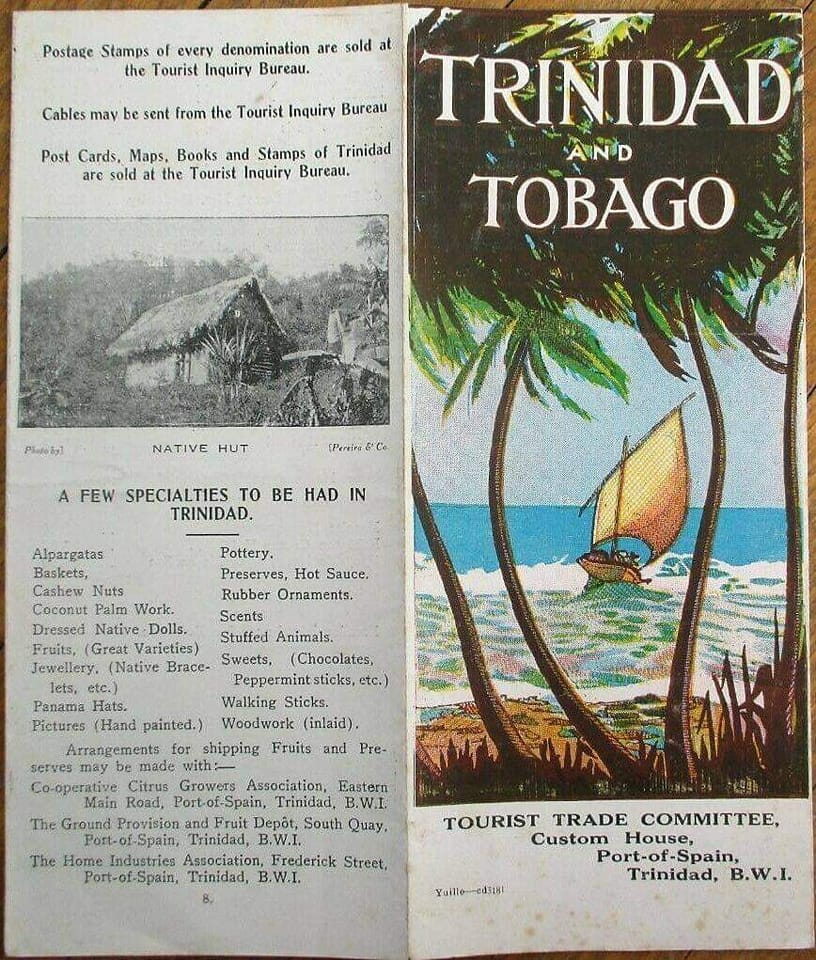
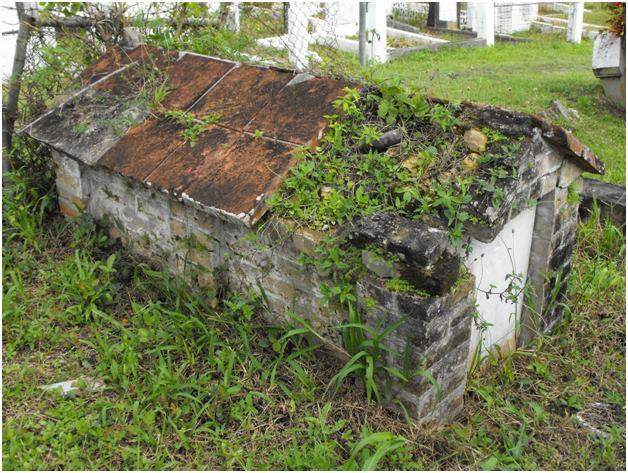

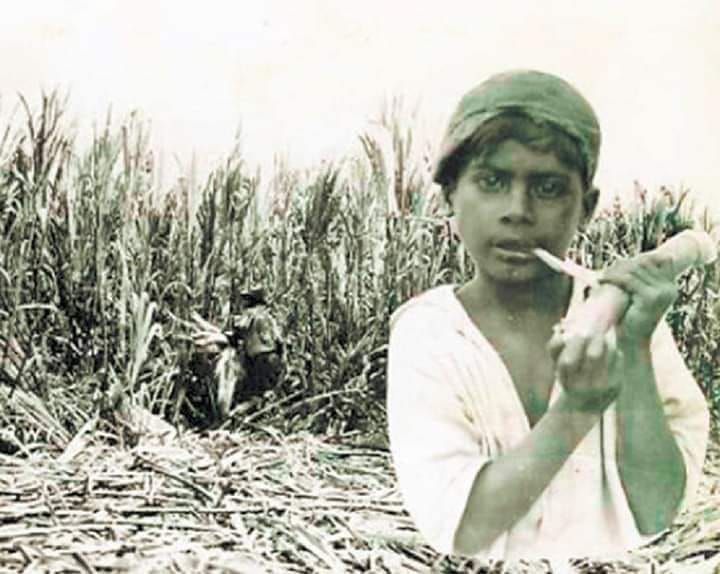
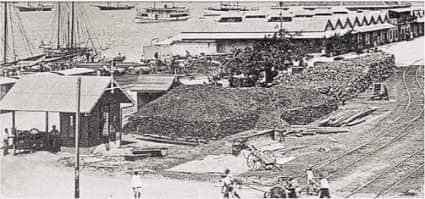
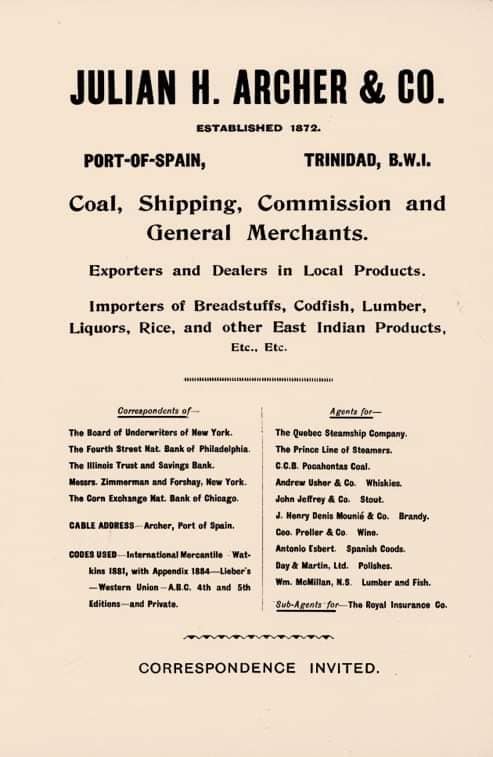
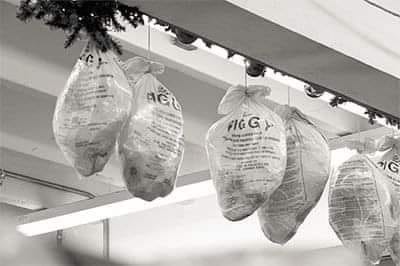
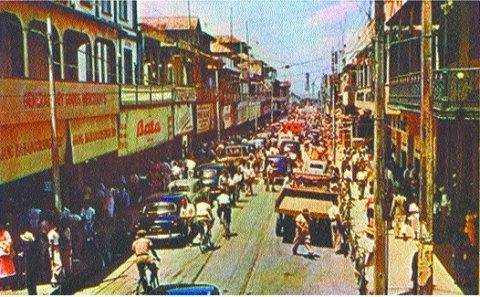

 RSS Feed
RSS Feed